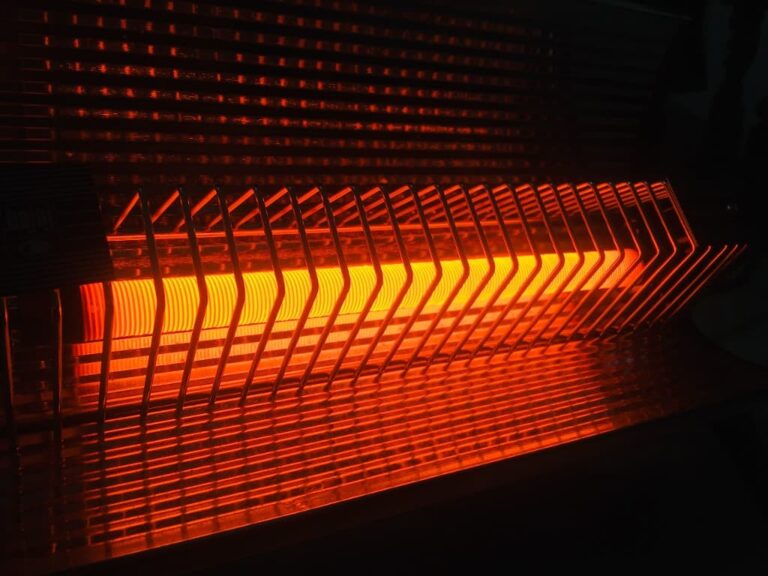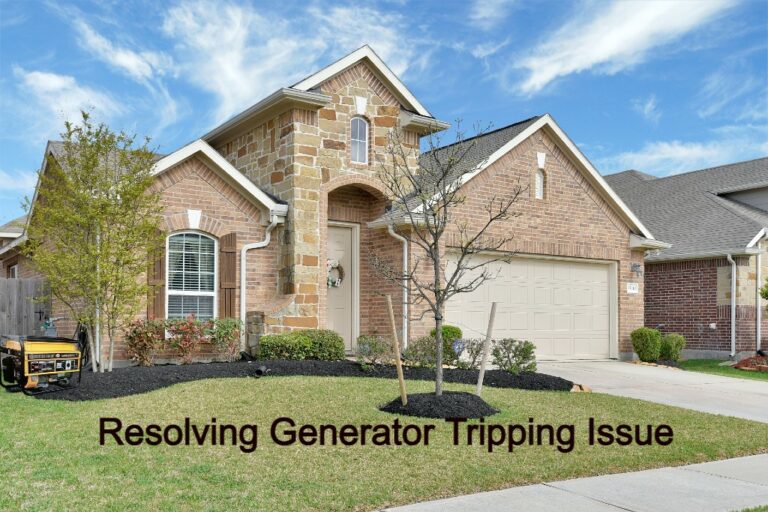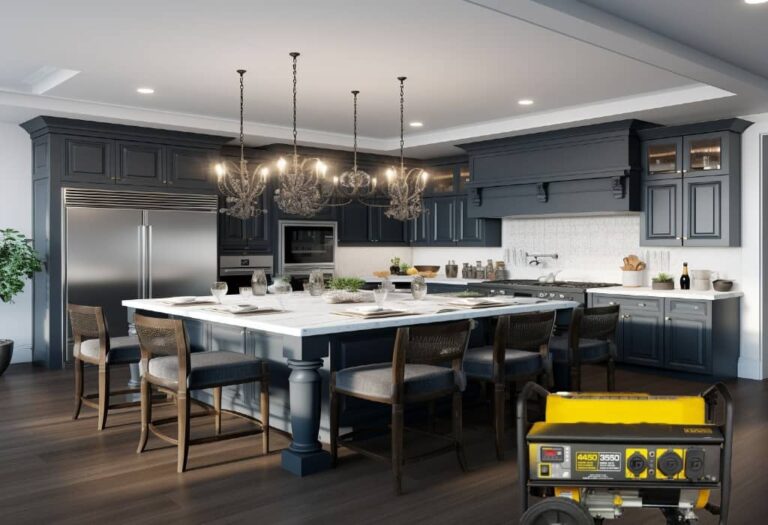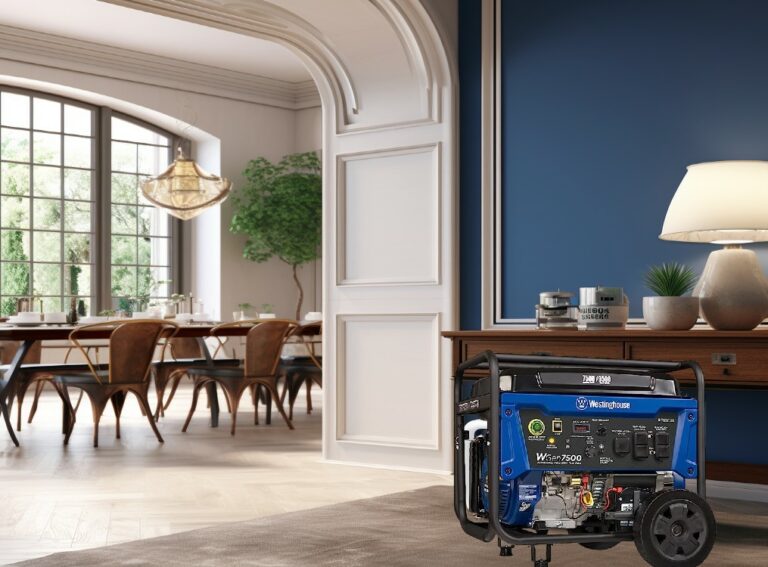What Size Regulator for Propane Generator
Most propane generators require a specific pressure regulator dimension to operate optimally, and you’re on the verge of discerning the appropriate one for your apparatus.
Searching for the correct regulator dimension for your propane generator is pivotal, considering the fuel requisites and the guidance the maker provides. The optimal regulator ensures your generator functions seamlessly and with utmost safety.
Acquainting yourself with the generator’s British Thermal Unit per hour (BTU/hr) rating is imperative, as this figure governs the flow rate your regulator manages. The pressure specifications are also vital, commonly denoted in inches of water column (WC).
Should these terms be unfamiliar, rest assured that by completing this exposition, you will be well-versed in precisely which size regulator will sustain your generator’s efficient operation.
Understanding Propane Generator Needs
To ensure your propane generator operates efficiently and securely, choosing a regulator adept at delivering an exact amount of gas, quantified in BTUs or cubic feet, at a precise pressure is essential.
Employing an inappropriate regulator, ill-suited for the required pressure, might lead to suboptimal gas flow and potentially harm your generator.
A dual-stage regulator is advisable for uniform pressure control from the propane storage to the generator. The initial stage reduces the pressure from the storage, and the subsequent stage ensures a consistent supply to your generator.
It’s wise to consult your generator’s manual for the suggested pressure specifications to prevent any malfunctions.
Determining the Correct Regulator Size
When selecting the appropriate regulator size for your propane generator, it’s vital to evaluate the generator’s BTU output and pair it with a regulator that can provide the essential flow rate. Opt for a propane regulator that’s up to the task of managing your system’s volume and pressure demands.
A high-pressure regulator might be necessary if your unit exhibits a robust demand. On the contrary, an ordinary tank regulator should typically suffice for devices operating on low-pressure propane.
Bear in mind that the regulator functions as the pivotal component of your propane mechanism, guaranteeing a consistent gas supply to your generator. Hence, it’s imperative to avoid selecting a regulator that’s either too small or too large, as such a mismatch could result in operational inefficiencies or potentially harm your generator.
Addressing Freezing Issues
How do you forestall your propane regulator from succumbing to the cold when your generator requires substantial fuel?
Grasping the root cause is pivotal; freezing complications often stem from water vapor within the tank crystallizing into ice, which can obstruct the flow of propane. To tackle this, verify that your tank pressure is robust. A loftier water column metric signifies more robust pressure, aiding in warding off the chill.
When faced with frigid climes or intense fuel consumption, ponder over opting for a more voluminous tank; it preserves temperature with greater efficacy. Introducing methyl alcohol into your propane storage acts as a thawing agent, preventing ice formation by water.
Keeping your regulator and tank valve shielded from the cold is paramount, so devising ingenious insulation methods may be necessary.
Installation and Safety Tips
Before setting up your propane regulator, confirm that it fits your generator’s unique flow and pressure requirements to ensure the utmost safety and peak functionality. Observing guidance on installation and safety sustains the integrity of your biofuel mechanism.
Here are some brief guidelines to bear in mind:
- Inspect for the approval seal on propane regulators and connecting hoses.
- Fit a spherical valve for swift cessation in urgent situations.
- Certify the connecting hose remains unobstructed and securely affixed to preclude leakage.
- Station the propane container in a stable locale with ample air circulation.
- Account for climatic variations; utilize a tank cover in frigid environments to avert solidification.
Heeding these recommendations will help you maintain a dependable and secure arrangement for your propane-driven generator.
Maintenance and Troubleshooting
For optimal operation of your propane generator, it’s imperative to carry out routine examinations and upkeep of the regulator, confirming its accuracy in pressure and flow delivery.
Steadfast observation and diagnostic procedures are paramount to ensure the uninterrupted function of your generator.
Cultivate the practice of scrutinizing the junctures connecting your regulator to the propane generator, particularly when utilizing a substantial propane tank. Be vigilant for any indications of deterioration or harm, and conduct occasional assessments of the regulator’s pressure levels.
In scenarios where a dual-tank configuration is employed, each with a capacity of 120 gallons, validate that both are functioning properly and that the transition between them is fluid.
Be aware a defective regulator might lead to suboptimal efficiency or outright failure of your generator. Hence, the significance of this component should always be considered.
Frequently Asked Questions
How Do I Know What Size Propane Regulator I Need?
To ascertain the suitable size for a propane regulator, one must scrutinize the BTU specifications of their appliance and seek a regulator whose capacity aligns. Selecting a regulator that delivers the appropriate pressure and volumetric flow to avert harm to your apparatus.
What PSI Regulator for Propane Generator?
For optimal performance of your propane generator, securing a regulator that delivers the precise PSI indicated by the manufacturer is essential. Consult the generator’s manual to determine the requisite pressure and select a compatible regulator to maintain safety and efficacy during operation.
How Much PSI Does a Propane Generator Need?
Refer to the manufacturer’s specifications to ascertain the necessary pressure for your propane generator. Typically, the requirement hovers around 10-11 inches of water column, approximately 0.4 psi. Verifying this detail with the guidelines provided for your apparatus is essential.
What Size Propane Line for a Generator?
Selecting the appropriate propane conduit dimensions for your generator hinges upon its specified flow rate and pressure demands, taking into account both the conduit’s length and girth to ensure peak operation and safety standards are met.
Conclusion
You can select the appropriate pressure regulator for your propane generator with the necessary wisdom. Align the BTU/hr output with the pressure needs; your path is clear.
Be vigilant against potential freezing complications, adhere to precautionary measures when setting up, and commit to consistent upkeep.
Equipped with these nuggets of advice, you’re poised to guarantee your generator’s smooth and secure operation.




